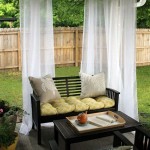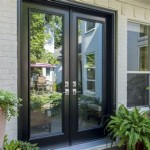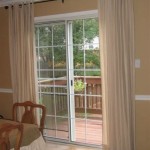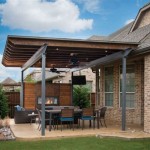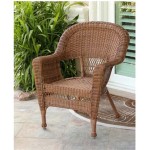The Ultimate Guide To Choosing A Wood Patio Chair Covers
Protecting outdoor wood patio chairs from the elements is crucial for maintaining their longevity and aesthetic appeal. Choosing the right wood patio chair covers involves considering various factors such as material, size, fit, and specific environmental conditions. This guide provides comprehensive information to assist in selecting the optimal covers to safeguard wood patio chairs effectively.
Understanding the Importance of Patio Chair Covers
Exposure to sun, rain, snow, and wind can significantly degrade wood furniture over time. Ultraviolet (UV) radiation fades and weakens wood finishes, while moisture promotes rot, mildew, and warping. Seasonal temperature fluctuations can also cause wood to expand and contract, leading to cracks and structural damage. Patio chair covers act as a barrier against these elements, extending the life of wood chairs and reducing the need for frequent repairs or replacements.
Furthermore, covers help keep chairs clean, preventing the accumulation of dirt, dust, pollen, and bird droppings. This reduces the amount of time and effort required for cleaning and maintenance, allowing individuals to enjoy their outdoor furniture with minimal upkeep. By investing in quality patio chair covers, property owners can preserve the value and beauty of their wood chairs for years to come.
The decision to use patio chair covers also contributes to overall outdoor space aesthetics. Weathered and dirty furniture can detract from the visual appeal of a patio or deck. Clean, well-maintained furniture, protected by covers, enhances the look and feel of the outdoor environment, creating a more inviting and comfortable space for relaxation and entertainment.
Key Considerations When Selecting Wood Patio Chair Covers
Choosing the appropriate patio chair covers requires careful consideration of several key factors to ensure adequate protection and durability. These factors include material type, size and fit, weather resistance, breathability, ease of use and maintenance, and additional features.
Material Type
The material of a patio chair cover significantly impacts its ability to protect against the elements. Common materials include polyester, vinyl, canvas, and polyethylene. Each material offers different levels of water resistance, UV protection, and durability. Polyester covers are often water-resistant and relatively affordable, providing a basic level of protection. Vinyl covers offer excellent water resistance but may not be as breathable, potentially trapping moisture inside. Canvas covers are durable and breathable but can be more expensive and require regular treatment to maintain water resistance. Polyethylene covers are lightweight and inexpensive but may not be as durable as other options.
For wood furniture, breathability is a crucial factor to consider. Moisture trapped under a cover can lead to mold and mildew growth, which can damage the wood. Breathable materials allow air to circulate, preventing moisture buildup and promoting healthy wood condition. Covers with vents or mesh panels can further enhance breathability. Selecting a material that balances water resistance and breathability is essential for protecting wood patio chairs effectively.
In addition to the primary material, some covers feature coatings or treatments to enhance their performance. UV-resistant coatings prevent fading and degradation of the cover material itself, extending its lifespan. Water-repellent treatments provide an extra layer of protection against moisture. These features can add value and improve the overall effectiveness of the patio chair covers.
Size and Fit
Proper sizing and fit are crucial for ensuring adequate protection and preventing damage to the chairs and covers. Covers that are too small may not fully protect the chairs, leaving them vulnerable to the elements. Covers that are too large can be blown off by wind or sag, creating pockets for water to collect.
Measuring the chairs accurately is the first step in determining the appropriate cover size. Measure the height, width, and depth of the chairs, including any arms or cushions. Compare these measurements to the dimensions listed for the covers. It is generally recommended to allow a few extra inches for ease of installation and removal. However, avoid oversizing the covers, as this can lead to a poor fit. Snug fits can be more effective at preventing wind from lifting the covers. Features such as drawstrings, straps, or buckles can also help secure the covers and ensure a tight fit.
Universal-fit covers are available, but they may not provide the best protection for all chair types. Custom-fit covers are designed to fit specific chair models or dimensions, offering a more tailored and secure fit. While custom covers may be more expensive, they provide superior protection and can be a worthwhile investment for high-value furniture.
Weather Resistance
The level of weather resistance required depends on the specific climate and environmental conditions. In areas with heavy rainfall or snowfall, waterproof covers are essential. In sunny climates, UV-resistant covers are necessary to prevent fading and degradation. In windy areas, covers with secure fastening systems are crucial to prevent them from being blown away.
Waterproof covers are typically made of materials such as vinyl or coated polyester. These materials prevent water from penetrating the cover, keeping the chairs dry and protected. However, it is important to ensure that the covers are also breathable to prevent moisture buildup inside. Covers with vents or mesh panels can allow air to circulate while still providing adequate water protection.
UV-resistant covers are treated with special coatings that block harmful UV radiation. These coatings prevent the cover material from fading and weakening over time. They also protect the wood chairs from sun damage, preventing fading, cracking, and warping. Selecting covers with a high UV protection factor is particularly important in areas with intense sunlight.
Wind resistance is another important consideration, especially in exposed areas. Covers with drawstrings, straps, or buckles can be secured to the chairs, preventing them from being blown off by wind. Weighting the covers with sandbags or other heavy objects can also help keep them in place. Some covers feature reinforced corners and seams for added durability and resistance to tearing.
Additional Features and Considerations
Beyond the core factors of material, size, and weather resistance, several additional features and considerations can further enhance the effectiveness and convenience of patio chair covers. These include ease of use and maintenance, storage options, color and style, and warranty and customer reviews.
Ease of Use and Maintenance
Covers that are easy to install and remove can save time and effort. Features such as handles or zippers can facilitate installation and removal, especially for larger or heavier chairs. Covers that are lightweight and foldable are easier to store when not in use.
Maintenance requirements vary depending on the cover material. Some covers can be easily cleaned with soap and water, while others require specialized cleaning products or treatments. Regularly cleaning the covers can prevent the buildup of dirt and mildew, extending their lifespan and maintaining their appearance. Check the manufacturer's instructions for specific cleaning recommendations.
Consider the frequency with which the covers will be used. If the chairs are frequently used, selecting covers that are easy to put on and take off is essential. If the chairs are only covered for extended periods, durability and weather resistance may be more important factors.
Storage Options
When not in use, patio chair covers should be stored properly to prevent damage and prolong their lifespan. Many covers come with storage bags or carrying cases for convenient storage. If storage bags are not included, consider purchasing separate bags or containers to protect the covers from dust, dirt, and moisture.
Store the covers in a dry, well-ventilated area to prevent mildew growth. Avoid storing them in direct sunlight, as this can cause them to fade or degrade. Folding the covers neatly can help prevent creases and wrinkles. Rolling the covers can sometimes be more efficient, depending on the material.
Consider the amount of storage space available when choosing covers. Lightweight and foldable covers are easier to store in small spaces. If storage space is limited, consider covers that can be easily compressed or rolled up.
Color and Style
While functionality is the primary consideration, the color and style of patio chair covers can also contribute to the overall aesthetic of the outdoor space. Covers are available in a variety of colors and patterns to match different furniture styles and decor preferences. Neutral colors such as beige, gray, and black are popular choices, as they tend to blend well with most outdoor settings.
Consider the existing color scheme of the patio or deck when choosing cover colors. Select colors that complement the furniture, landscaping, and surrounding structures. Avoid choosing colors that clash with the existing decor.
Some covers feature decorative accents or patterns to add visual interest. However, keep in mind that elaborate designs may be more difficult to clean and maintain. Simple, understated designs are often the most practical choice.
Warranty and Customer Reviews
Before making a purchase, research the manufacturer's warranty and read customer reviews. A comprehensive warranty can provide peace of mind and protect against defects or premature failure. Customer reviews can offer valuable insights into the quality, durability, and performance of the covers.
Pay attention to reviews that address specific concerns, such as water resistance, UV protection, and wind resistance. Look for reviews that mention the reviewer's location and climate, as this can provide a more relevant comparison. Be wary of reviews that seem overly positive or negative, as these may not be genuine.
Consider the manufacturer's reputation and customer service policies. A reputable manufacturer is more likely to stand behind its products and provide prompt and helpful customer service.

The Ultimate Buyer S Guide For Outdoor Lounge Chairs Neighbor

How To Choose The Best Patio Furniture For Your Home

A Guide For Choosing The Best All Weather Outdoor Furniture Madbury Road

How To Care For Wood Patio Furniture This Old House

Outdoor Furniture Guide Frontgate

The Essential Guide Outdoor Furniture Dimensions For A Perfect Patio F J Outdoors

Outdoor Furniture Guide Frontgate

Best Color Combinations For Mixing Patio Furniture

A Simple Guide To The Best Patio Cover Materials And How Choose W Zimmer Company

How To Choose The Right Outdoor Furniture Upholstery Fabric
Related Posts


